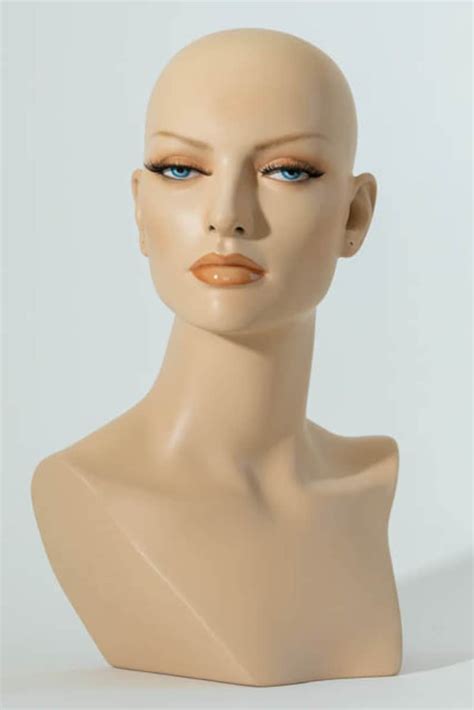Wig Head: The Foundation of Wig Styling
A wig head, also known as a mannequin head, is the cornerstone of any wig styling routine. It provides a stable platform to practice wig application, styling, and maintenance.

Key Features of a Wig Head
- Material: Wig heads are typically made from foam, fiberglass, or a combination of both. Foam heads are lightweight and economical, while fiberglass heads are more durable and heat-resistant.
- Size and Shape: Wig heads come in a variety of sizes and shapes to accommodate different head circumference and hair textures. Choose a head that closely matches your own head size and shape.
- Base: The base of the wig head is essential for secure wig placement. Magnetic bases allow for easy wig attachment, while bolt-on bases provide a more permanent hold.
Wig Stand: The Perfect Display
A wig stand is indispensable for storing and displaying wigs when not in use. It keeps wigs organized, prevents tangles, and extends their lifespan.
Types of Wig Stands
- Clamp Stand: Clamps onto a table or desk, providing a stable base for wig storage and styling.
- Tripod Stand: Features a three-legged base for added stability, ideal for display purposes.
- Adjustable Stand: Allows you to adjust the height and angle of the wig for optimal viewing.
Choosing the Perfect Wig Head & Stand Combo
Selecting the right wig head and stand combination is crucial for a seamless wig styling experience. Consider the following factors:
Wig Head
- Material: Determine the ideal material based on your budget and need for durability.
- Size and Shape: Match the head size and shape to your own.
- Base: Choose a base that accommodates your preferred wig attachment method.
Wig Stand
- Type: Select the type of stand that suits your storage or display needs.
- Stability: Opt for a stand that provides ample stability to prevent accidents.
- Adjustability: Consider adjustability if you need to display wigs at different heights or angles.
Common Mistakes to Avoid
- Using a Wig Head without a Base: Can lead to wig slippage and instability.
- Choosing a Wig Head that’s Too Small or Too Large: Can hinder wig application and styling.
- Neglecting to Clean the Wig Head: Accumulation of hair products and dirt can compromise wig hygiene.
Pain Points Addressed by Wig Heads & Stands
- Tangles: Prevents tangles by providing a smooth surface for wig storage.
- Storage Challenges: Provides a dedicated space for wig storage, eliminating clutter.
- Styling Time: Reduces styling time by providing a stable base for wig manipulation.
Motivations for Using Wig Heads & Stands
- Improved Styling Skills: Practice makes perfect, and wig heads enable you to develop your wig styling techniques.
- Professional Image: Well-styled wigs enhance your professional appearance and boost confidence.
- Hair Health: Protects natural hair from damage when wearing wigs.
Wig Head & Stand Applications Beyond Styling
While wig heads and stands primarily cater to wig styling, their versatility extends to other creative realms:
- Hat and Accessory Display: Showcase hats, scarves, and jewelry on wig heads for professional presentations or personal collections.
- Art and Photography: Utilize wig heads as unique props for photography or art projects, adding depth and intrigue to compositions.
- Educative Tool: Demonstrate hairdressing techniques to students or clients, providing a hands-on training experience.
FAQ on Wig Heads & Stands
- How often should I clean my wig head? Clean the wig head regularly, especially after use, to maintain hygiene and prevent product build-up.
- Can I use a wig stand for other purposes? Yes, wig stands can be used to display hats, scarves, jewelry, and other accessories.
- What is the recommended height for a wig stand? The ideal height ranges from 12-16 inches, providing easy access to the wig while ensuring stability.
- Is it necessary to use a special brush for wig heads? No, a regular hairbrush or comb is sufficient for removing tangles and maintaining the wig head’s surface.
- Can I use a wig head to create my own wigs? Yes, wig heads provide a suitable base for wig making, allowing you to customize and design your own unique styles.
- How long do wig heads usually last? With proper care and cleaning, wig heads can last for several years, ensuring a long-term investment for your wig styling needs.
Tables for Quick Reference
Table 1: Wig Head Materials
| Material | Pros | Cons |
|---|---|---|
| Foam | Lightweight, economical | Less durable, may not withstand heat |
| Fiberglass | Durable, heat-resistant | Heavier, more expensive |
| Combination | Balance of durability and weight | May be more difficult to clean |
Table 2: Wig Stand Types
| Type | Features |
|---|---|
| Clamp Stand | Clamps onto a table or desk, providing a stable base for styling or storage |
| Tripod Stand | Three-legged base for added stability, ideal for display |
| Adjustable Stand | Allows for adjustment of height and angle for optimal viewing |
Table 3: Wig Head and Stand Combinations
| Wig Head Material | Wig Stand Type |
|---|---|
| Foam | Clamp Stand, Tripod Stand |
| Fiberglass | Tripod Stand, Adjustable Stand |
| Combination | Clamp Stand, Tripod Stand, Adjustable Stand |
Table 4: Creative Applications of Wig Heads and Stands
| Application | Description |
|---|---|
| Hat and Accessory Display | Showcase hats, scarves, and jewelry on wig heads for professional presentations or personal collections |
| Art and Photography | Utilize wig heads as unique props for photography or art projects, adding depth and intrigue to compositions |
| Educative Tool | Demonstrate hairdressing techniques to students or clients, providing a hands-on training experience |
| Wig Making | Use wig heads as a base for creating custom wigs, allowing for personalization and unique styling options |
